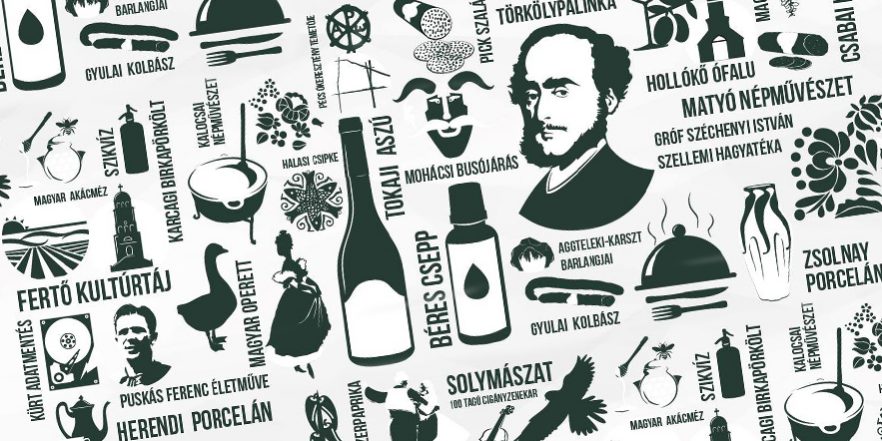Although the concept of Hungaricums by now has been fully incorporated into our common language, it is always good to clarify the exact meaning of the word. According to a law adopted in 2012, ‘Hungaricum’ is a term that stands for a unique collection of exceptional and distinctive features that together deliver top performance in Hungarian-ness.
Any citizen may submit a proposal for classification as something to be a Hungaricum. Of course, the process is not over from one day to the other. Hungaricums must first obtain various number of smaller, regional quality ratings in order to get to the top of the value pyramid.
Many people are spontaneously mentioning the Tokaj wine and the grey cattle grazing on the Hungarian puszta as being typical Hungaricums. And yes indeed, both appear on the list, but the repertoire of Hungaricums is far much wider.
Hungaricums
We currently identify a total of 70 Hungaricums, which are classified into 8 key categories. The range is extremely wide, including the Béres healthdrops in “Health and Lifestyle”, the Mohács feast in “Cultural Heritage”, and the cave of Aggtelek-karst listed in the “Natural Environment” category.
Perhaps the stereotype that Hungarians love their own belly is right. Many of the Hungaricums have gastronomic implications. In fact the majority items listed among Hungaricums are in the food category. Paprika from Szeged and Kalocsa are not only stand-alone Hungaricums. They are key ingredients in some of our famous recipes and some of our typical food products.
Hungarian paprika and Hungarian-ness
Red paprika and Hungarian-ness simply belong together. The people of our neighbouring countries – especially our Northern Slavic neighbours who tend to underspice their dishes – immediately associate the abundant use of paprika with Hungarian cuisine. Indeed, I agree. We Hungarians are very proud to explain to our foreign guests that we can make many different Hungarian dishes from one single paprika-spiced fish soup base. What’s more, we are able to cook at least twenty dishes from paprika-spiced fat-fried onion base.
In the food category of Hungaricums we can find both the Kalocsa and the Szeged originated paprika. And thinking of paprika as a base ingredient in food processing, it is definitely worth mentioning some other Hungaricums such as the sausages from Csaba or Gyula, and some typical spicy food-paste.
Next week we will write more about the connection of the famous Hungarian kitchen with paprika.

Our products at PaprikaMolnár Ltd.
Tetszett a cikk? Ha szeretne még paprikás és fűszeres témában, heti rendszerességgel cikket olvasni, hírt kapni az ÚJ paprika elkészültéről, iratkozzon fel hírlevelünkre. Subscribe to our Blog and enjoy our Paprika Poster.







